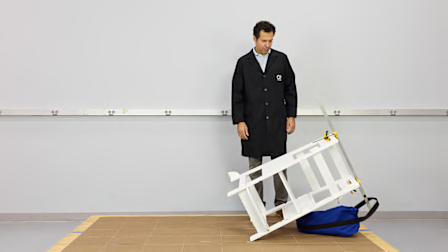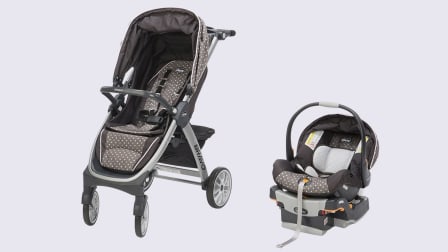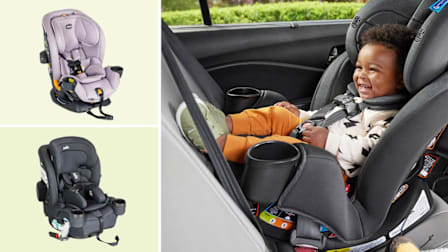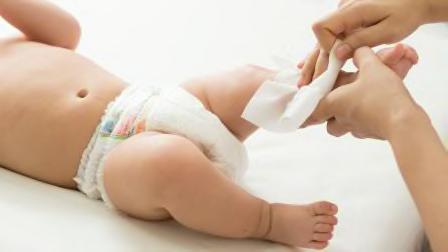What Parents Should Know About Crib Tents and Sleep Tents
Some parents swear by them for keeping “jailbreaking” toddlers in bed at night. But are trendy products like the SlumberPod safe?
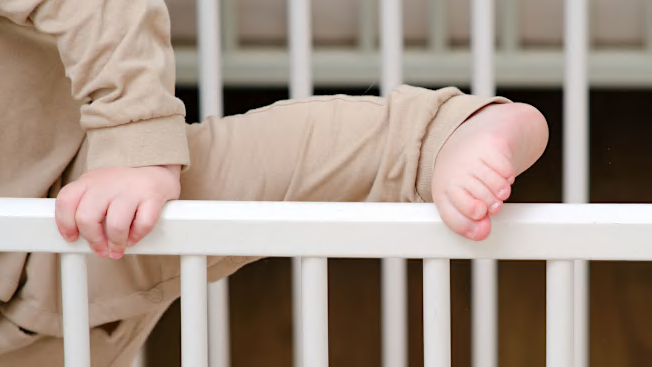
When our 2-year-old daughter started trying to climb out of her crib, my husband and I panicked. Was this normal? Was she trying to climb out too early? What was the next step? Was it too soon to transition to a toddler bed? If we did transition to a toddler bed, would she stay in it? And, also importantly, would any of us ever sleep again?
Are Crib Tents Safe?
When a friend’s daughter started trying to climb out of her crib, he joked that he wished there was a top to the crib to keep her inside. He was worried that she would fall and hurt herself.
We didn’t know that there were products on the market that aimed to do just that.
“Crib tents are mesh coverings that are designed to prevent kids and babies from climbing out of their cribs,” says Whitney Casares, MD, a pediatrician and founder and CEO of Modern Mommy Doc. They fit over a crib and have zippered openings that allow easy parental access.
Crib tents have been on the market since at least the late 1990s. But there’s been greater interest recently because of a viral TikTok about keeping a toddler in a crib.

Photo: Manufacturers Photo: Manufacturers
But crib tents aren’t safe. They go against the AAP’s recommendations for safe sleep “because they carry increased risks of entrapment, strangulation, and suffocation,” Casares says. The group says that nothing but a fitted sheet should be in a crib, bassinet, or play yard.
In 2012 the Consumer Product Safety Commission announced a voluntary recall for crib tents and play yard tents made by Tots in Mind due to the risk of entrapment and strangulation. “If the dome portion inverts inside the crib or play yard, or if the product becomes partially detached from the crib or play yard,” that creates a serious hazard to infants and toddlers, according to the statement.
What About Sleep Tents or SlumberPods?
Sleep tents are often used by parents for travel. They’re large enclosures designed to contain a crib, as opposed to a crib tent, which attaches directly to the top of a crib. SlumberPod is a popular brand.
Sleep tents are “a variation on the crib-tent theme and are designed to be placed over a crib or portable crib/playpen and often used for travel to provide a dark environment in hopes of helping a baby sleep better while away from home,” says Caroline Brown, MD, who practices general pediatrics at the Children’s Clinic of Winston-Salem in North Carolina.
I came across the SlumberPod when my family was embarking on our first vacation with our kids to Walt Disney World. It would be the first time we all shared a hotel room. My husband and I worried—as parents tend to do when experiencing an unknown first—about how well our kids would sleep in a new environment. We also wondered if the shared space meant we would be forced to go to bed early with them.
I asked some fellow parents how they handled a similar situation and soon heard all about the SlumberPod. Sarah Husband, a mother of two young children who lives with her family in New Hampshire, first heard about the product from a well-known parenting content creator on social media. “We can still make naps a priority and make early bedtimes work,” she said about using the SlumberPod. “I actually enjoy staying in a hotel room with my kids because I get some downtime after they go to bed and can still use an iPad to watch TV or hang out in the room” without disturbing their sleep. She said the product was easy to travel with because it could fit in a suitcase.
But are sleep tents safe? There are no active recalls for the SlumberPod. But in 2012 the CPSC announced a recall of small, tent-style travel beds, the PeaPod and the PeaPod Plus Travel Bed, after they were associated with several safety incidents, including one death. The PeaPod, which has an inflatable mattress base, was intended for use as a freestanding sleep environment but was found to present a risk of suffocation and entrapment.
SlumberPods, by contrast, are intended to enclose a travel crib or other safe sleep environment rather than serve as a sleep environment on their own. “They’re generally considered safe because they go over the entire crib or play yard,” Casares says. “They can be a helpful tool for families who need to create an environment more conducive to sleep when traveling or in other less-than-ideal scenarios.”
In my own research, the main concerns that popped up with the SlumberPod were overheating and ventilation. My kids run hot, so I worried that my toddler would get too hot and sweaty inside the black fabric tent. Husband had the same concern when she first looked at the SlumberPod: “Our only concern . . . was airflow and ventilation,” she says. “[But] the fabric is breathable, and there are flaps you can open. We put a fan near it if it is warm when [our son] is using it.”
Currently, there have been no reported safety incidents associated with the product. SlumberPods “are not attached to a crib and therefore supposedly pose less risk per the manufacturer,” Brown says. But “sleep experts still caution against their use for concerns about possible entrapment and/or overheating for young infants.” The manufacturer recommends the SlumberPod be used only for children ages 4 months and up, and only with a safe sleep environment like a play yard or mini crib.
Safe Tips to Prevent Your Child From Climbing Out of a Crib
So if you have a toddler who is trying to escape from a crib, what’s the best sleep environment for them?
“When a baby or toddler starts trying to escape their crib, parents can take several steps to keep them safe,” Casares says. Here are a few of the top tips we heard from her and other pediatricians:
Lower the crib mattress. Make sure it’s set at its lowest level so the child can’t easily climb out, Casares says. After dropping the mattress, “if the crib railing is lower than their chest, it’s time to go ahead and transition out of the crib and into a bed,” Brown says.
Remove objects from the crib. That includes toys, pillows, blankets, and stuffed animals. According to Brown, these items could be climbed on and allow children to boost themselves up and over the rail. AAP safe sleep guidelines also recommend this.
Use a sleep sack. A sleep sack or nonweighted wearable blanket can help prevent a child from climbing out of their crib by limiting their ability to get their legs over a side. A sleep sack can also provide some comfort while they sleep.
When to Transition From a Crib to a Bed
Once a child can climb out of their crib, it’s time to consider transitioning to a bed. “One parenting hack is that you don’t necessarily need to purchase a toddler bed,” Brown says. “You can simply put a regular mattress on the floor for a young toddler and then put it in a regular bed as they get older and are able to maneuver safely in and out of a standard-sized bed.”
While my daughter has been successfully sleeping through the night in her big-girl twin-sized bed for a couple of years (after quite some time getting used to it and her newfound freedom), my husband and I know we’ll be dealing with this issue again soon with our rambunctious 2-year-old son. He loves his crib, so we’re crossing our fingers that he won’t try to escape anytime soon.

















